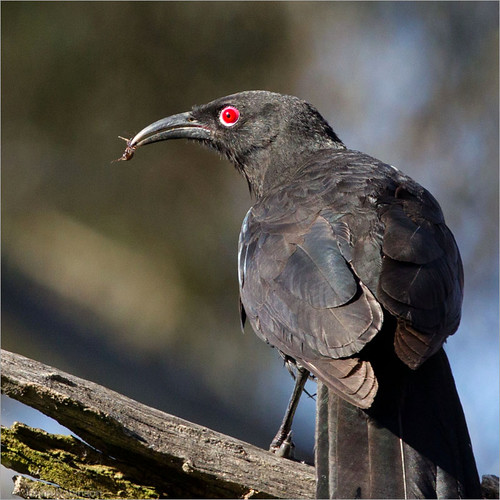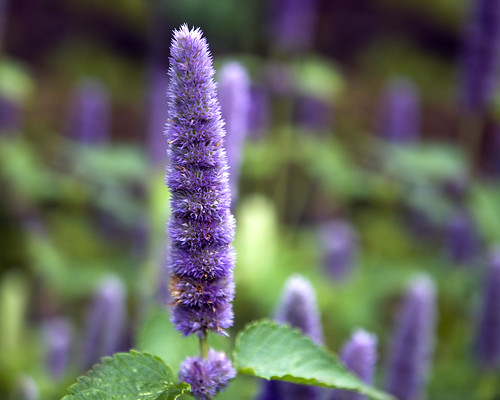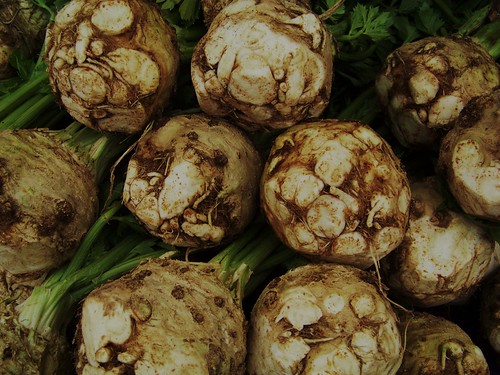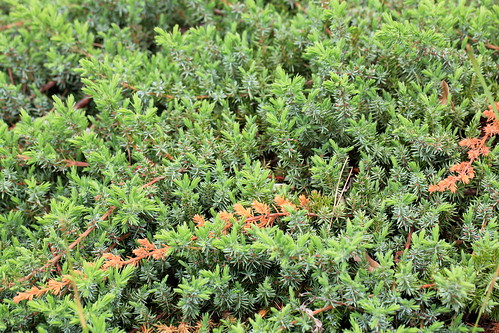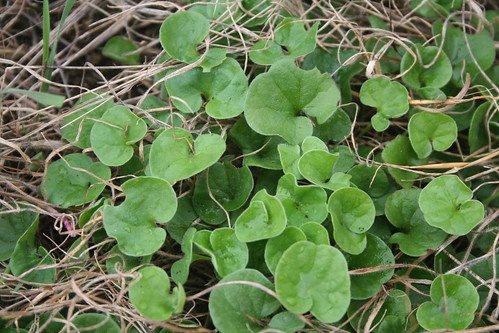Spice it Up
Dill
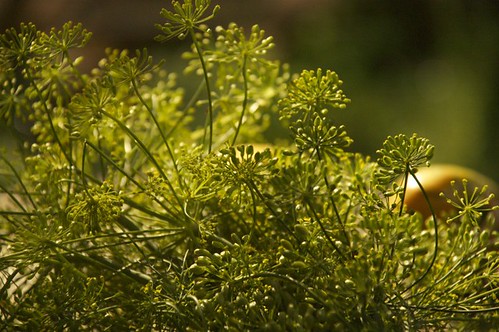 The earliest known record of dill as
a medicinal herb was found in Egypt 5,000 years ago.
The earliest known record of dill as
a medicinal herb was found in Egypt 5,000 years ago.Gladiators were fed meals covered with dill because it was hoped that the herb would give them valour and courage.
There are traditional uses for dill the herb, what about the seed?
Did you know that Dill seeds were called “meetinghouse seeds” because they were chewed during long church services to keep members awake or kids quiet. The seeds were also chewed in order to freshen the breath and quiet noisy stomachs. I'm talking with Ian Hemphill from Herbies Spices
Dill likes to be planted in cool weather. In warm winter areas that don't experience a hard frost, you can plant dill in autumn or winter.
In cooler areas, plant dill a week or two before your last hard frost.
After the first sowing, plant again every 10 days or so if you need lots of dill for a continuous crop.
For balcony gardeners or gardeners with potted herb garden, when growing in pots, use a deep one so the long tap root has somewhere to go.
Remember that you will eventually have a plant that is about a metre tall so you might want to stake your plant.
The seeds are used in pickling and can also improve the taste of roasts, stews and vegetables. Try grinding the seeds to use as a salt substitute. Both the flowering heads and seeds are used in flavoured vinegars and oils.
If you have a herb garden, send in a photo or drop us a line to. realworldgardener@gmail.com or write in to 2RRR po Box 644 Gladesville NSW 1675
Vegetable Heroes:
- Radishes! Raphanus sativus or Radish, a member of the Brassicaceae family.
- There’s a lot to be said about the Radish, but some of it not complimentary. The word radish comes from the Latin word radix, meaning root. Fair enough.
- Many think the radish first grew in Asia but it was certainly grown in Egypt in 2780 BCE. Egyptian writing reports that radishes were a common food in ancient Egypt before the pyramids were built.
- Not only the Egyptians but also the Greeks raised and ate Radishes.
- In Ancient Greece the radish was so revered that gold replicas were made and offered to the god Apollo, who it seems was a very busy god responsible for a number of things, including medicine and healing.
- The first radishes that were grown were black.
- It wasn’t until the 1700s that there were white varieties, and red radishes.
- In France, Radishes would be served when you began a meal, to cleanse your palate and get it ready for the feast that came next.
- You could even try that yourself at home!
- Did you grow Radishes as a kid? I certainly did. They’re pretty easy to grow and as a youngster, you might’ve overwatered them. Then they became hollow inside. Hands up for that one!
- Radishes can be grown all year round, in arid, tropical and subtropical areas In temperate and cool mountain zones, avoid trying to grow them in winter, they’ll slow down to practically a crawl if they grow at all.
- The variety French Breakfast holds up and grows better than most early types in the summer heat as long as they’re watered regularly.
- You can sow radishes now but to have radishes in winter you need to sow them towards the end of autumn.
- Seedlings take 1 or two weeks to appear.
- They grow more slowly than spring sowing of radishes; but they grow much larger, remain crisp longer, and are usually more pungent at this time of year.
- They also hold in the ground or store longer than spring varieties.
- There are two things that radishes really nead-
- (i)Radishes grow well in almost any soil that’s got the usual compost, and organics added to it before planting.(ii)R
- adishes need plenty of water. Not enough water makes the radishes grow really slowly, also makes radishes taste a bit hot and peppery, and woody in texture.
- Then again, too much water and they develop with a hole in the middle.
- Radishes grow super fast! From seedling to harvest is usually about 25-30 days. That’s 3 1/2 -4weeks.
- At the seedling stage you can add a liquid fertiliser once a week.
- But one thing to note, at the growing stage, don’t add any more fertiliser when you’re watering otherwise you’ll get lots of leaf and hardly any radish.
- Keep them watered and check them often. They will be ready to eat before you know it.
- By checking your radishes often when they’re getting close to the size you want, they won’t speed past their best time to be picked, and certainly before heat, sponginess or seedstalks can begin to develop.
- Q. Why do my radishes grow all tops with no root development?
- A. There may be several reasons: seed planted too thickly and plants not thinned , weather too hot for the spring varieties that do best in cool temperatures (planted too late or unseasonable weather) and way too much shade.
- Q. What causes my radishes to be too "hot"?
- A. The "hotness" of radishes results from the length of time they have grown rather than from their size. The radishes either grew too slowly (not enough waterering) or are too old.
- Why are radishes good for You?
- Radishes are a very good source of fibre, vitamin C, folic acid and potassium, and a good source of riboflavin, vitamin B6, calcium, magnesium, copper and manganese. Basically are vitamin pill in a compact package that’s crunchy.
- Radishes are also mildly anti-inflammatory, so there you have it, lots of good reasons to start getting into those radishes now.
Design Elements:
with landscape designer Louise McDaidWe’ve been updating our garden over the last couple of weeks. Starting with flowers and flower colour, then changing or putting in some new foliage colour. Perhaps some grasses or cordylines with pink or red, like Cordyline “Electric Pink” with a muted pink shade really.That was last week. Today, we’re talking about what do you do if you just want to update your existing plants? Sounds like you don’t have to spend a penny, just put in some hard yards in the garden to give it a fresh look.
How about moving some plants when the weather’s cooler?
I always find moving plants is very satisfying, especially if you move them into the right location where they just suddenly look better. That’s a great way of updating your garden with existing plants.
Of course moving plants is best done in the cooler weather even if you do spray them with Stressguard. It’s just too hot right now.
But think about if your gardens need
some of that type of adjustment like that, and make a note of where you would
like the plants to go.
There should be plenty of ideas to
get you started if you’re a beginner gardener, and some tips for those of you
who’ve been doing it for a while.
The Helichrysum petiolare that Louise
mentioned is commonly known as Licorice plant. Helichrysum comes in two colourways,
the traditional grey green foliage of the species and the lime green foliage of
Helichrysum petiolare “Limelight.” Easily clipped into a bun shape or grown as
a low hedge.

- Do you buy seeds on impulse, never to put them in the ground?
- Apparently research shows that at least half of seed buys buy seeds implusively.
- Well, here’s some encouragement to get you sowing some flowers. Namely Granny’s Bonnet, Columbines or Aquilegia.
- Belonging to the Ranunculaceae family.
- It seems strange that two birds as different as the eagle (in Latin, aquila) and the dove (columbus) should both give their name to the same flower - the aquilegia, or columbine.
- The petals are supposed to resemble the outspread wings of these birds, and the spurs their arched necks and heads.
- There’s so many mouth-watering colours and cultivars to choose from.
- Sizes vary from dwarf to normal sized flowers anywhere from 30cm to 70cm tall.
- Apart from orange, the spectrum includes every other colour from white through to black.
- Aquilegiaflowers are exotic looking, and quite complex shape –the flower has 5 petals with hooked spurs and 5 petal-like sepals.
- The petals are shaped like a 'horn ', and have nectary-producing glands deep inside the flower where only the longer-tongued bumble bees can reach.
- The leaves are maidenhair fern like, or tri-foliate or oval shaped, and a sort of mid to glaucous green.
- Aquilegias lend themselves to cottagey or semi-wild settings.
- They prefer dappled shade. They love deep, rich soil.
- Most garden varieties don’t resent clay, but alpine types prefer well-drained loam.
- When to sow Aquilegia in your district:
- Sow seeds of Aquilegia from February to May in Tropical and Sub-tropical and Temperate areas, for cool temperate areas, wait until March then continue planting until May.
- Before sowing the seeds, work in extra humus: old muck or garden compost is best.
- Mulch with the same material.
- There’s no need to fertilise if you add this compost etc before sowing seeds.
- Keep this plant moist at all times. If you let Columbines dry out they’ll go dry brown and crispy.
- There’s those that say, remove the seed heads to let the plant to continue flowering, and also seed set weakens any plant’s life.
- If you’re doing this, cut out the old stems so you can get another lot of flowers.
- I've never found auilegia to be weedy. They can self sow a little bit, but only if conditions are right, ie, moist soil, not overly sunny, or perhaps just morning sun only.
- If you want lots of Columbines, save the seed and sow it fresh if you want more plants elsewhere.
- In late winter you can lift and divide rootstocks of Columbines, and plant them out 30cm apart.


